- filed under: School Garden Basics, Seasonal Outdoor Learning
Winter Gardening With Kids
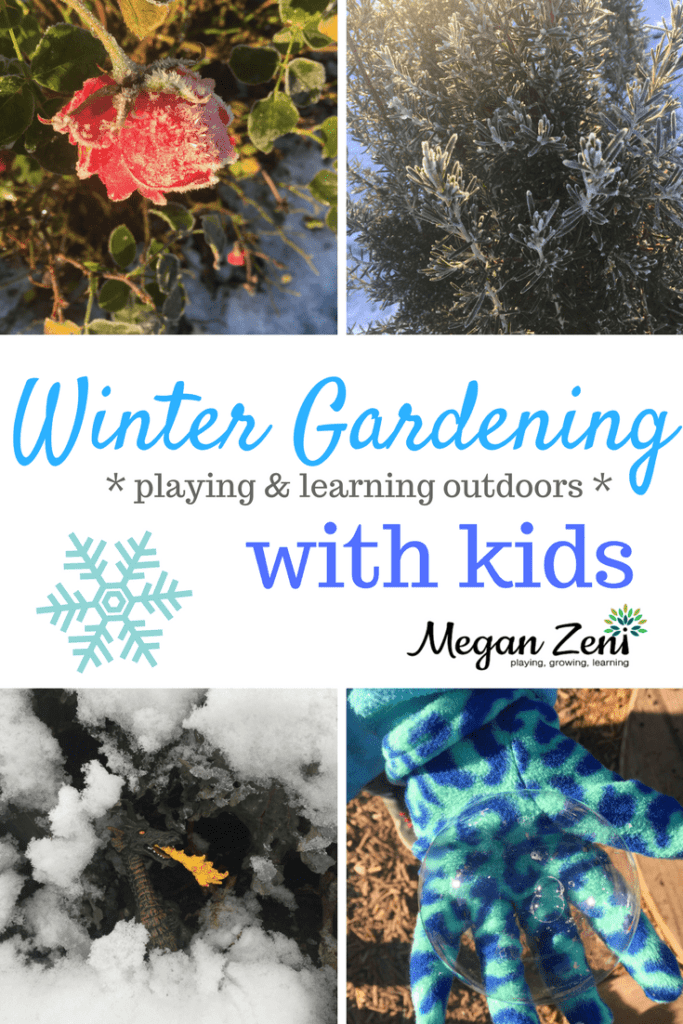
I teach in an outdoor classroom all year, in all weather, and in all seasons. In Canada. The most common question I get is “what do you do in the winter?” There are so many reasons to get outdoors and learning in all seasons, and winter is no exception.
I’m a big advocate for unstructured play in the garden, especially in the non growing season, to deeply attach children to place. By spending time playing in the garden, children will naturally feel an instinct to protect the crops produced during the growing season, and will feel more enthusiasm for the subtle changes that emerge in early spring!
If you are looking to get your children or students out in the garden during the winter months, here are my top tips for winter gardening with kids.
Winter Play In Your Garden
Here on the westcoast we have typically mild winters, but this past one was colder than usual, which was great for experimenting with ice and snow! Playing with frozen bubbles is a fantastic opportunity to explore states of matter. When your temperatures dip below minus 5, simply bring your summer bubbles outside and watch them change from a liquid to solid state. Read more about how to play with ice and frozen bubbles here.
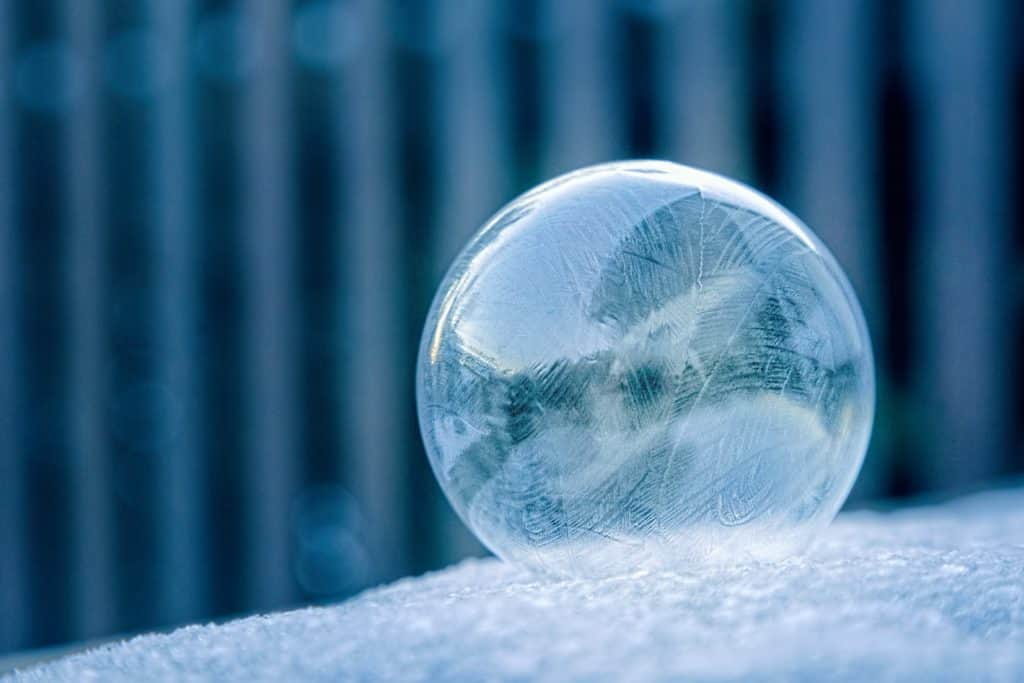
And don’t forget that playing in your Winter garden attaches children to place in a way that helps them notice subtle changes in the landscape in early Spring. Add toy dump tricks for snow removal, and clear those garden pathways or turn your mud kitchen into a snow kitchen!

Tracking animals and looking for animal prints is another great way to support children’s skills in looking closely. If you are lucky to get some fresh snow, get the children to pause and predict what tracks they might see before they start tromping through it! Bring technology out to the garden and take photographs of the prints to research later. Read Aloud Whose Garden Is It by Mary Ann Hoberman to ponder the many creatures who visit the garden when we are away.
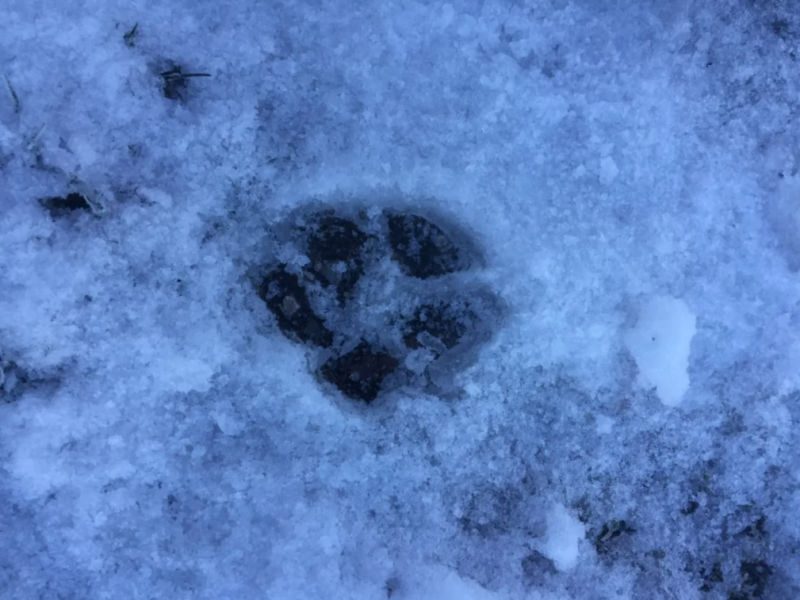
Many classes use loose parts for storytelling and creative play through the winter months. In our outdoor classroom, our loose parts are logs, branches, tarps, and wood cuts. Fort and den building becomes a big focus for us in the winter months and shelter play is embedded in our winter storytelling. Read more about ways to play in the rain here.
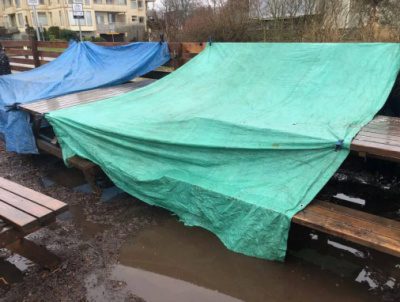
If you enjoy using loose parts indoors, you can certainly bring them outdoors in winter too! Use magnifying lenses to look closely at frost and snowflakes and then invite children to make their own unique snowflakes with whatever materials you have in your beautiful junk drawers! These snowflakes were built on a placemat baseplate with blue jewels, popsicle sticks and q-tips:

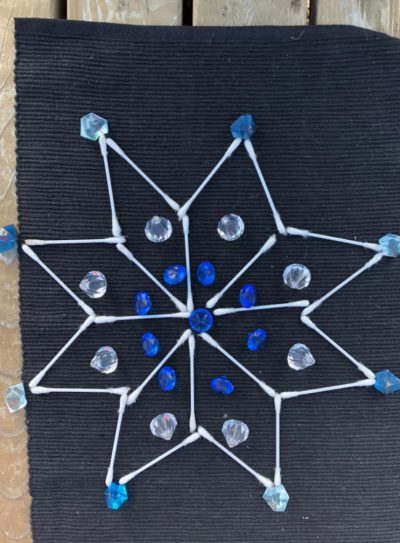
Don’t forget to keep those dinosaurs and dragons outside during the winter moths too. The cold won’t hurt them and their fiery breath will help melt the snow! Read more about how to build an all season dinosaur garden here.
Winter Arts & Crafts In Your Garden
There are many creative ways to use found treasures in your garden for nature inspired arts and crafts. Making an attempt to be more eco-friendly in your classroom art projects benefits everyone, including the environment. Try at least one paper and glitter free art project a month with your kids – you’ll be amazed how beautiful nature art can actually be! Read more about ice art here.
In this project, we collected seeds, pinecones and twigs of plantings to freeze with water in a bundt pan. The result was a beautiful piece of art that melted away as the weather warmed, providing further opportunities for observing seasonal change. If you are looking for inspiring books to read about the changing seasons, check out my related blog post: 13 Best Picture Books For Understanding Seasonal Change K-5.
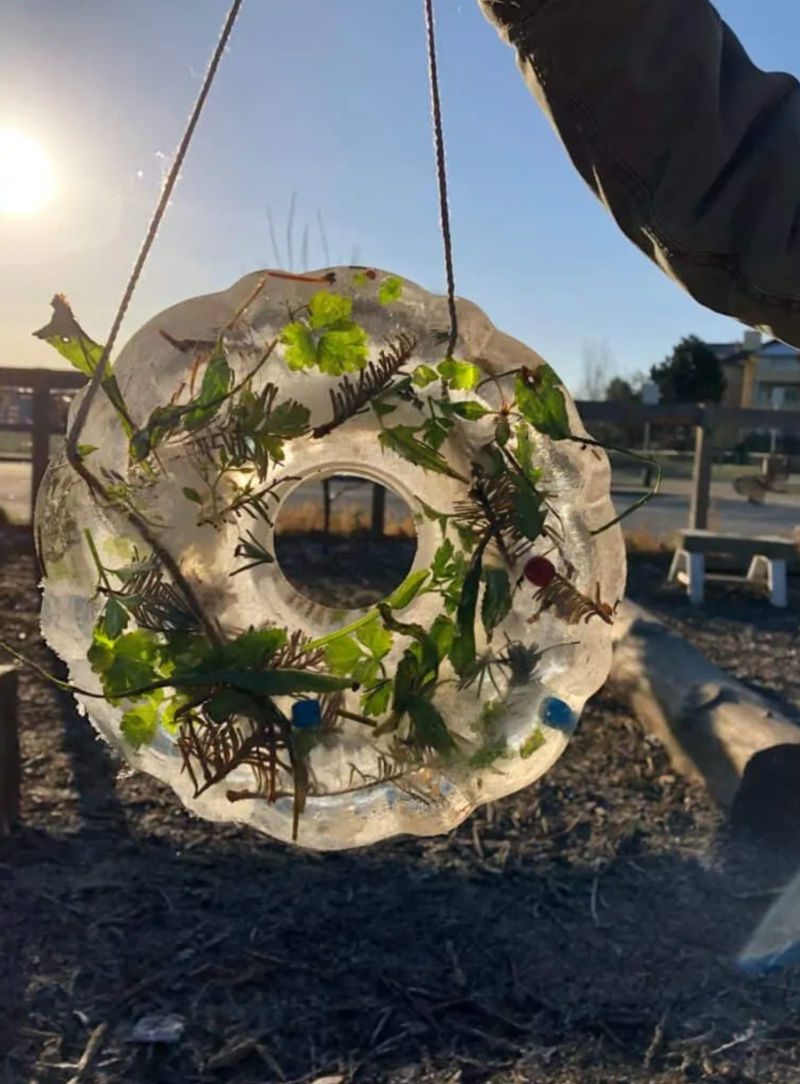
Planning Ahead
Winter is the time to plan ahead for the growing season. Clean up your shed, and make sure all tools are clean and sharp. Wash children’s garden gloves and order seeds for starting in the spring. I also check the pH of our soil, and track the temperature of the soil, so children can observe how the changing seasons impact our soil conditions. There is a a lot of science and math waiting to be explored in your soil! You can pick up an easy to read soil thermometer here.
The biggest job to tackle during the winter months is planning the garden map for the upcoming growing season. This ensures the right plants are in the right place for a best chance of growing! By keeping a record of what we grew where each year, we can more easily rotate crops that benefit from rotation. If you don’t have a garden map of your growing area, this is a great mapping activity for kids.
Get out those measurement tools, use ratio to scale, figure out which way is north, and develop those map making skills!
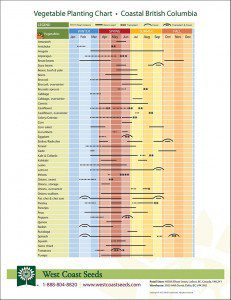
Winter Gardening With Kids: Planting & Harvesting
There are several plants that continue to grow well during the winter months in coastal British Columbia. Check with your local nursery or use this resource from WestCoast Seeds to determine what grows when in your particular region of North America. The guides have most of Canada covered, as well as Washington, Oregon, New England, New York State and Pennsylvania.
Westcoast seeds also has a specific Planting For Fall and Winter Harvests guide you can reference.
Our mild winter means we can take advantage of overwintering crops that benefit from the cold of winter for excellent spring growth and flavour! Cabbages, Broccoli, Cauliflower, garlic and onions typically overwinter well in our school garden. You can plant fava beans right through the winter months in coastal British Columbia for a summer harvest. And, we can harvest plenty of crops through the winter too: Brussell sprouts, kale, carrots, parsnips and spinach keep us snacking through the cold months!
Related Posts
How to grow broad beans with kids
Once you’ve made some decisions about what crops you want to plant, it is time to map out where they should live through the growing season. The Landed Learning Project at The University of British Columbia has created this excellent resource for planning out your crops and mapping the garden with kids:
Winter Gardening with Kids
However you spend your time in the Winter garden, my advice is to place string lines around the edges of any in ground garden beds to keep kids from running in or over any plantings (like garlic) that are buried beneath the leaf and snow piles! You can also use cold frames or cloches over low beds to keep your crops going through the winter months, which makes them easier to see in heavy snow. We often grow spinach and other leafy greens under our cloche.
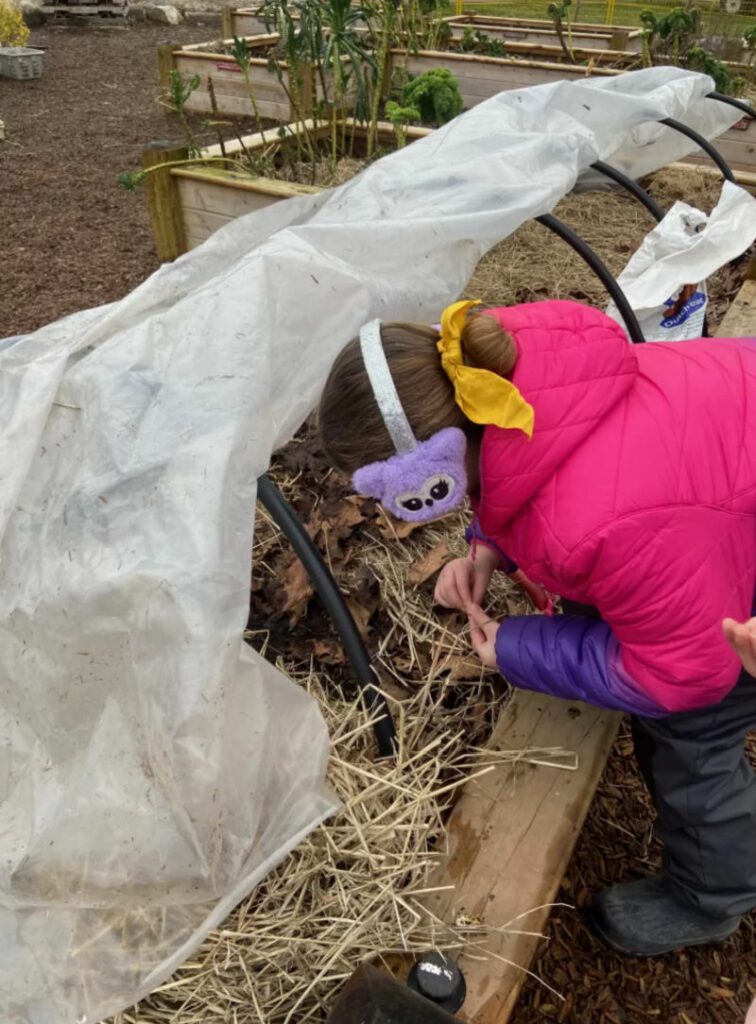
Don’t forget to check out my related post: Fall Gardening with Kids for more seasonal ideas and inspiration.
Looking for more inspiration for gardening with kids? Come join me on Pinterest for great ideas from around the web!
